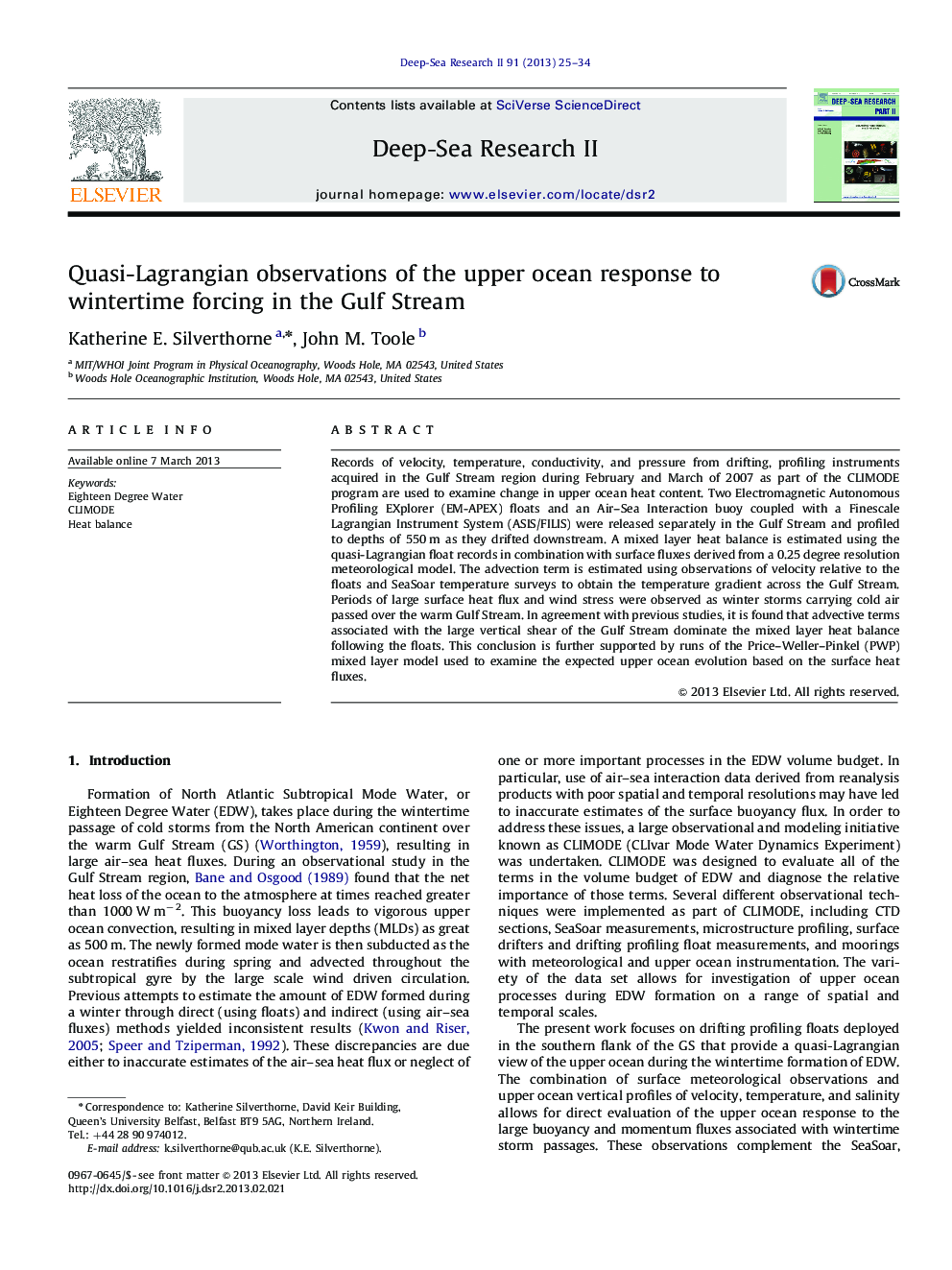| Article ID | Journal | Published Year | Pages | File Type |
|---|---|---|---|---|
| 4536600 | Deep Sea Research Part II: Topical Studies in Oceanography | 2013 | 10 Pages |
Records of velocity, temperature, conductivity, and pressure from drifting, profiling instruments acquired in the Gulf Stream region during February and March of 2007 as part of the CLIMODE program are used to examine change in upper ocean heat content. Two Electromagnetic Autonomous Profiling EXplorer (EM-APEX) floats and an Air–Sea Interaction buoy coupled with a Finescale Lagrangian Instrument System (ASIS/FILIS) were released separately in the Gulf Stream and profiled to depths of 550 m as they drifted downstream. A mixed layer heat balance is estimated using the quasi-Lagrangian float records in combination with surface fluxes derived from a 0.25 degree resolution meteorological model. The advection term is estimated using observations of velocity relative to the floats and SeaSoar temperature surveys to obtain the temperature gradient across the Gulf Stream. Periods of large surface heat flux and wind stress were observed as winter storms carrying cold air passed over the warm Gulf Stream. In agreement with previous studies, it is found that advective terms associated with the large vertical shear of the Gulf Stream dominate the mixed layer heat balance following the floats. This conclusion is further supported by runs of the Price–Weller–Pinkel (PWP) mixed layer model used to examine the expected upper ocean evolution based on the surface heat fluxes.
